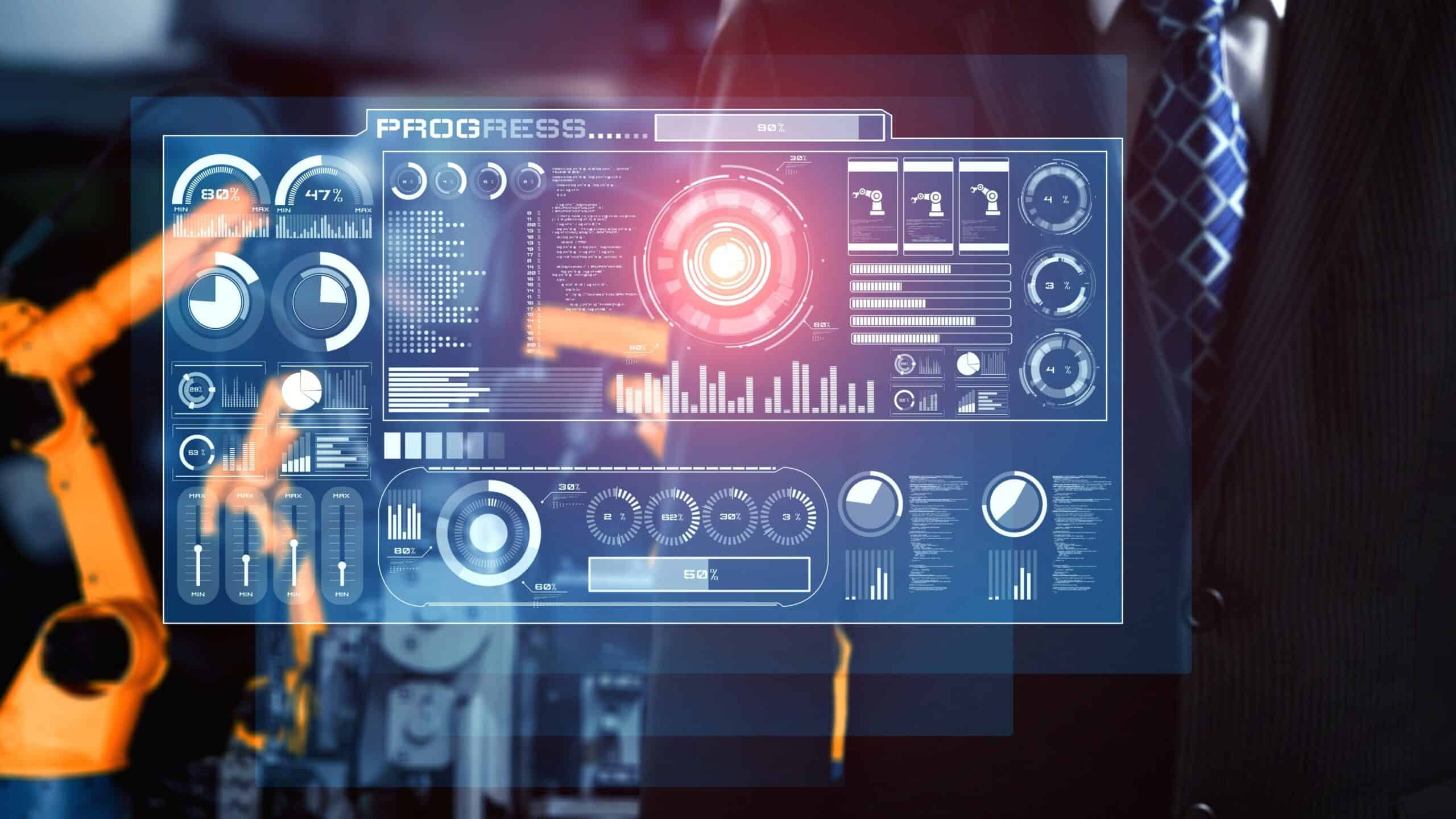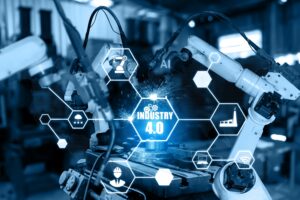
In this rapidly evolving digital landscape, businesses need to stay ahead to remain competitive. The traditional approach to enterprise architecture is becoming obsolete, giving way to the rise of composable enterprises. But what exactly does it mean to be a composable enterprise, and how can organizations make the shift?
In this article, we will explore the concept of a composable enterprise and discuss the steps required to embrace this future-forward approach. From understanding the core principles of composability to reimagining your IT infrastructure, we will guide you through the transition process.
By adopting a composable enterprise mindset, businesses can leverage the power of modularization and scalability. With the ability to rapidly assemble and disassemble IT components, organizations can efficiently respond to market demands and achieve unparalleled agility.
Embracing the future means stepping into the world of composable enterprises, where constant innovation and flexibility reign supreme. Join us as we delve into this transformative journey and uncover the keys to a successful shift to a composable enterprise.
Understanding the concept of a composable enterprise
A composable enterprise is an organization that embraces a modular and scalable approach to its IT infrastructure. It is built on the principles of composability, which allows businesses to rapidly assemble and disassemble IT components to meet changing market demands. Unlike traditional monolithic architectures, composable enterprises are agile, flexible, and future-proof.
To fully understand the concept of a composable enterprise, it is crucial to recognize the importance of modularity. Modularity refers to the ability to break down complex systems into smaller, independent components. These components can be assembled and reassembled quickly and efficiently, allowing organizations to respond to market changes and customer demands in real-time.
Composability extends beyond just the IT infrastructure. It also encompasses organizational culture, processes, and mindset. In a composable enterprise, teams are empowered to collaborate, experiment, and innovate. Silos are broken down, and cross-functional teams work together to achieve common goals. This culture of collaboration and agility is what sets composable enterprises apart from their traditional counterparts.
The benefits of embracing a composable enterprise
Embracing a composable enterprise mindset comes with a plethora of benefits. The modular and scalable nature of a composable architecture allows businesses to achieve unparalleled agility and flexibility. Here are some key benefits that organizations can expect when they make the shift:
- Accelerated innovation: Composable enterprises can quickly adapt to changing market dynamics and customer needs. With the ability to assemble and disassemble IT components, organizations can experiment and innovate at a rapid pace. This fosters a culture of continuous improvement and enables businesses to stay ahead of the competition.
- Improved time-to-market: The modular nature of a composable enterprise allows for faster development and deployment cycles. Organizations can build and release new features and products in a fraction of the time it would take with traditional architectures. This not only helps businesses meet market demands but also gives them a competitive edge.
- Enhanced scalability: Composable architectures are inherently scalable. Organizations can easily add or remove IT components as needed, allowing them to scale up or down based on demand. This scalability ensures that businesses can handle increased workloads without compromising performance or efficiency.
- Cost optimization: By adopting a composable enterprise approach, organizations can optimize their IT spending. Instead of investing in large, monolithic systems, businesses can focus on building and integrating smaller, more specialized components. This reduces costs associated with maintenance, upgrades, and unnecessary features.
- Improved customer experience: Composable enterprises are better equipped to deliver personalized and seamless customer experiences. With the ability to quickly adapt to customer preferences and market trends, organizations can tailor their offerings to meet individual needs. This leads to increased customer satisfaction and loyalty.
Key components of a composable enterprise
To successfully make the shift to a composable enterprise, organizations need to understand the key components that make up this future-forward approach. Here are some essential elements to consider:
- API-driven architecture: APIs (Application Programming Interfaces) play a crucial role in composable enterprises. They enable the seamless integration of different IT components and facilitate communication between systems. APIs allow organizations to leverage existing resources while introducing new functionalities and services.
- Microservices: Microservices are small, autonomous services that work together to form a larger application. They are independently deployable and scalable, allowing organizations to build complex systems by combining multiple microservices. This modular approach enhances flexibility and enables rapid development and deployment.
- Containerization: Containers provide a lightweight and portable environment for running applications. They encapsulate an application and its dependencies, allowing for consistent and reliable deployment across different environments. Containerization simplifies the management of IT components and ensures consistency across the entire infrastructure.
4. DevOps practices: DevOps is a set of practices that combines development and operations teams to achieve faster and more reliable software delivery. By embracing DevOps, organizations can automate processes, improve collaboration, and increase the speed and quality of software releases. DevOps is essential for achieving the agility required in a composable enterprise.
Steps to make the shift to a composable enterprise
Transitioning to a composable enterprise requires careful planning and execution. Here are the key steps organizations should follow to make a successful shift:
Assessing your current IT infrastructure
Assessing your current IT infrastructure is the crucial first step in transitioning to a composable enterprise. Start by conducting a thorough inventory of your existing systems, applications, and infrastructure components. This will help you understand the strengths and weaknesses of your current setup and identify areas for improvement.
Once you have a clear picture of your IT landscape, evaluate the level of modularity and scalability it offers. Composable enterprises rely on loosely coupled components that can be easily assembled and disassembled. Assess whether your current infrastructure can support this level of flexibility or if it needs to be reimagined.
Consider factors such as legacy systems, monolithic architectures, and technical debt that may impede the transition to a composable enterprise. Identify any dependencies and interconnections that may need to be addressed to enable modularity. This assessment will serve as the foundation for developing a roadmap for the transition.
Developing a roadmap for the transition
A well-defined roadmap is crucial for a successful transition to a composable enterprise. Identify the desired end state and break it down into smaller, achievable milestones. Prioritize initiatives based on their impact and feasibility. Define clear timelines, allocate resources, and establish metrics to measure progress. A roadmap will ensure a systematic and structured approach to the transition.
Choosing the right technology partners
Selecting the right technology partners is vital when making the shift to a composable enterprise. Look for partners with experience in building composable architectures and expertise in the required technologies. Evaluate their track record, industry reputation, and alignment with your goals. Collaborating with the right partners will ensure a smooth transition and ongoing support during the journey.
Training and upskilling your workforce
Transitioning to a composable enterprise requires a workforce that is equipped with the necessary skills and knowledge. Invest in training programs and upskilling initiatives to empower your employees. Provide opportunities for learning and development, and encourage a culture of continuous improvement. A skilled and adaptable workforce is essential for embracing the future of composable enterprises.
Overcoming challenges during the transition
Transitioning to a composable enterprise is not without its challenges. Resistance to change, legacy systems, and cultural barriers can hinder progress. It is crucial to address these challenges head-on. Communicate the benefits of the transition, involve key stakeholders early on, and provide support and resources to overcome obstacles. A proactive approach to challenges will ensure a smooth and successful transition.
Conclusions
Embracing the future means stepping into the world of composable enterprises, where constant innovation and flexibility reign supreme. By adopting a composable enterprise mindset and leveraging the power of modularization and scalability, businesses can thrive in the digital age. The ability to rapidly assemble and disassemble IT components allows organizations to efficiently respond to market demands and achieve unparalleled agility.
As technology continues to evolve, the concept of a composable enterprise will become even more relevant. Organizations that embrace this future-forward approach will be well-positioned to navigate the ever-changing digital landscape. By making the shift to a composable enterprise, businesses can unlock new opportunities, accelerate innovation, and stay ahead of the competition.
The future is composable, and the time to embrace it is now.



Made for production, manufacturing, and beyond:
Discover how NC-Vision can help you get real-time insights into processes, machines, and resources to support data-driven decisions and increase business efficiency. Connect with our dedicated team members today to explore the possibilities.
NC-Vision is committed to helping the manufacturing industry make the most of no-code software development. We offer a range of no-code solutions that enable companies to quickly and easily create custom solutions that are tailored to their needs. Our tools allow companies to create solutions faster, more cost-effectively, and with more customization than ever before.












